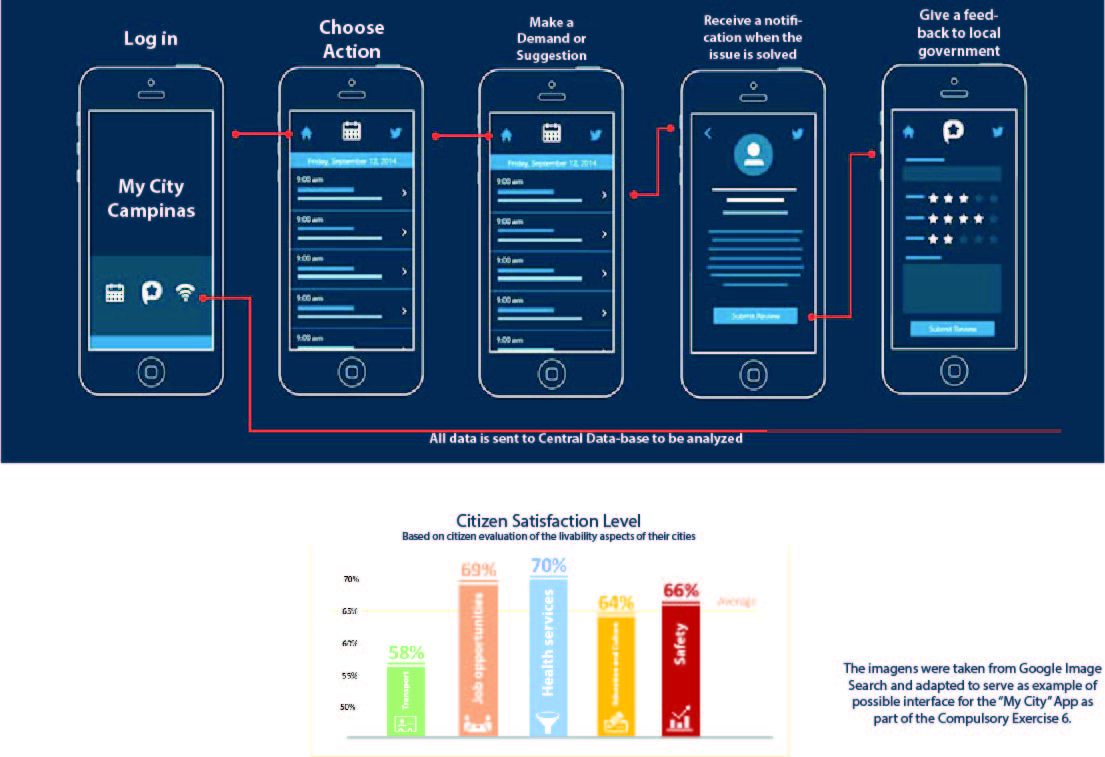
Uploaded on 2017-06-12 by carolina batista
Technology is increasingly taking place in our daily life. People are spending more and more time connected to the internet through smartphones and it doesn't have to be something negative. Mobile apps are helping people to save time by enabling them to check their bank account, pay bills, transfer money, buy stuff, rent a car or call a taxi, book a hotel room, to check-in online and avoid queues, make appointments to the doctor, control their health habits, and so on. People use apps because it is easy. You don't have to commute from your work to the bank to pay your bills. You don't have to drive for miles to find a bookshop that may not even have the book you are looking for. You can check and do everything in the internet and all of this activities generates a lot of data. It is such a powerful tool that can be and should be used in Citizen Design Projects. My idea is that every city should have a “My City” app to facilitate the communication between citizens and city government. The citizens could ask for repairs (to close potholes, replace lamps, prune trees), ask for more security in specific areas that have not enough police presence and where they feel unsafe, ask for more local health centers if they feel that there is not enough centers in their neighbourhoods, etc. This app could use some kind of map-based interface, just like Waze, so people can open the app, choose the action, the app locates the person and send the demand and location to a municipal data-center where it will be analyzed. In cases of repairs, the municipality can rapidly check and fix the issue, sending a message to all those who asked for that same repair in the app informing that the problem was solved and asking for feedback. In more complex cases, such as the implementation of new health centers or security posts, the municipality could analise the number of requests for the same area (and cross this data with existing data about the areas with higher levels of violence or robbery) and prioritize those areas with greater demand. It would be more effective in cases which the city suffers from money shortage. Moreover, it would influence how people feel and interact with those areas: if they feel unsafe, they will avoid it, and abandoned areas tend to be even more dangerous, creating a kind of unsafety cycle. The next step would be to create a regional data-base that could cross the information of each city and compare the results, so the governments could always look for the best and most effective practices adopted by other governments. Also, there could be an area where citizens could rate their satisfaction with each aspect of their cities (security, leisure, work opportunities, culture, livability, transportation, etc) and compare their cities with the other cities, so they could demand improvements from local government